|
HOME: www.hiltonpond.org |
|||
THIS WEEK at HILTON POND Subscribe for free to our award-winning nature newsletter (Back to Preceding Week; on to Next Week) |
All text, maps, charts & photos © Hilton Pond Center 2016 BIRD BANDING SUMMARY: --THUMBNAIL RESULTS-- After last year's satisfying results of 2,346 birds banded at Hilton Pond Center--best totals in our 12 most-recent years--2016 turned out to be a bit of a disappointment with just 1,711 new birds; this was 635 less than in 2015 and below our 35-year average of 1,855 bandings. The just-ended year's biggest numbers came from three species--House Finch (430), American Goldfinch (420, midwinter adult male, above), and a record-smashing 373 Ruby-throated Hummingbirds; these three combined for 1,223 individuals, or 71% of the annual total. In all, a mere 41 species crossed our banding table in 2016--not quite a third of the 126 species banded here since 1982 and our lowest diversity since 2006. We had hoped to reach the 65,000 total-bird mark in our 35th year at Hilton Pond but ended up just a little short at 64,943--in part because of weather and reduced mist net hours during peak spring and fall migration periods. All text, maps, charts & photos © Hilton Pond Center
All text, maps, charts & photos © Hilton Pond Center --BACKGROUND INFO-- Through the years we have observed fewer and fewer birds free-flying at Hilton Pond Center, which certainly influences overall banding success. This year, however, banding tallies were appreciably lower not only because of relatively fewer winter finches that would have swelled our numbers but because weather during much of the year was simply not conducive to running mist nets: Spring was quite rainy and summer was hot and cloudless, while we had unusually windy conditions almost daily from July through September. Then late fall brought 50 continuous days of drought (see November 2016 photo above of exposed pond margin) and many local birds seemed to disappear.
All text, maps, charts & photos © Hilton Pond Center For the sake of bird welfare we don't open our nets at the Center when it's too hot for us OR the birds (above 90 degrees or so) or below 40 degrees; when it's windy; or in the rain, Thus, weather differences year-to-year have definite impact on banding results. (Regardless of weather, we're careful to check nets frequently and remove birds before they incur any damage. That's an already banded Carolina Wren in the photo above--a resident "net junkie" we've recaptured many times.) In some past winters we have deployed nets on dark nights to capture Northern Saw-whet Owls, but ever-larger Coyote clans that showed up locally several years ago make that an unwise procedure.
All text, maps, charts & photos © Hilton Pond Center On top of weather influences we missed the Center's prime spring migration week by banding and guiding at the New River Birding & Nature Festival in Fayette County WV--which we never regret. We were pleased Costa Rican friend and colleague Ernesto M. Carman (with spotting scope, above) was here for a few days prior to help run nets prior to our traveling together to the Mountain State. (The Hiltons also were gone for 11 days in November when we met up with 'Nesto in Costa Rica for our annual Operation RubyThroat citizen science research expedition to Ujarrás, and we also were away for an extended family trip in December.)
All text, maps, charts & photos © Hilton Pond Center As always, banding activity at the Center shut down for 2-7 days on several occasions throughout the year when the bander was out of town for consulting work or other speaking engagements (such as our annual "Hummingbird Mornings" talk, above, in Oak Hill WV). We can't complain about these off-site activities because they and on-site Guided Field Trips yield much-needed revenue that allows us to operate Hilton Pond Center on a shoestring. (We also get much-appreciated support from individual donors, such as those acknowledged at the end of this and every installment of "This Week at Hilton Pond.") Nonetheless, we doubt even 12 full months of banding would have enabled us to reach our all-time highs of 95 species and 4,061 individuals set 'way back in 1991. During 2016 there was an apparwnt summer/autumn dearth of birds due to weather, plus we did not spend enough days deploying mist nets at the Center. All this likely caused us to miss quite a few species--especially Neotropical migrants as they passed through in spring or fall.
All text, maps, charts & photos © Hilton Pond Center On days when we WERE at the Center (see plat above) we almost always ran a few sunflower seed traps for songbirds (locations A, B & C), and late March through mid-October we concentrated on Ruby-throated Hummingbirds coming to sugar water traps at those three locations. When weather and time allowed, we typically deployed 6-8 mist nets just outside the old farmhouse and office (larger red box on map) where we could keep a close eye on them. During spring and fall migration periods we sometimes ran additional nets at various spots along the outlying nature trails (D thru Z). We do not tally net- or trap-hours at the Hilton Pond Center--we find it too complicated because of the way we have to operate--so we can't compare actual banding effort from one year to the next. Despite any such annual variations in bander activity, our long-term banding study still helps us gain a better understanding of nature trends in here in the Carolina Piedmont.
All text, maps, charts & photos © Hilton Pond Center Year-to-year differences in net- and trap-hours DO affect our banding results, but of greater significance is the way the landscape at Hilton Pond Center has changed during the 35 years we've worked and resided here. When we purchased our 11-acre plot in 1982 it was almost all open (above), the result of a century of agriculture that apparently included cattle grazing and row crops such as corn, cotton, tobacco, and soybeans. We decided early on we would NOT be spending our time--or wasting energy or natural resources--cutting 11 acres of grass, so we allowed the land to go fallow, maintaining only three-foot-wide nature trails that meander for nearly two-and-a-half miles around the property.
All text, maps, charts & photos © Hilton Pond Center Under this laissez-fair philosophy of land management, vegetational succession ensued and local habitats passed through stages, first from old field to shrub land and then to Eastern Red Cedar stands. Eventually the cedars were shaded out, transitioning to our current young forest of pine and sundry hardwoods with minimal herbaceous ground cover. An aerial photo of Hilton Pond Center from March 2012 (above) shows how thoroughly the land has become covered by woody growth--mostly fast-growing Loblolly Pines on the north edge and hardwoods between the two ponds and on the southern half and eastern end of the property.
All text, maps, charts & photos © Hilton Pond Center Deciduous trees these days at the Center are primarily Winged Elm and Sweetgums, with a scattering of Black Cherry, Green Ash, Hackberry, Flowering Dogwood, and various oaks and hickories. Just as vegetation has changed (above), so has local bird life; with regard to banding, many species that hung out in vegetation close to the ground where our mist nets could snare them now fly uncaptured in treetops high above.
All text, maps, charts & photos © Hilton Pond Center Speaking of vegetational change, Google Earth posted aerial images from October 2014 that show Hilton Pond Center's old farmhouse and the massive 150-year-old White Oak (above) that toppled in September of that year. We feel quite certain loss of this ancient canopy tree had a negative impact on Center avifauna, but on the positive side its absence has created a "hole in the sky" that provides a better view of sunsets and birds flying over. All text, maps, charts & photos © Hilton Pond Center All text, maps, charts & photos © Hilton Pond Center (Click on chart above for a larger version in a new browser window) --2016 BANDING DETAILS-- As depicted on the chart above (click on it to open a larger version in a new browser window), 2016 ended with 1,711 birds banded from 41 species for Hilton Pond Center. These numbers were under the 35-year average of 1,855.5 individuals and well below the species average of 65.3 species. (Dotted trend lines continue to show a decline in both categories.) This year's bird total was significantly less than half what we caught in our big year of 1991 (4,061 individuals), and diversity in 2016 didn't come close to 95 species that same year. At least some of this discrepancy is the result of a big shift in vegetational cover noted above--it was in the mid-1990s when the Center's previously open areas were becoming dominated by young trees--but it's possible epidemic West Nile Virus in that decade also took its toll, especially on birds such as Blue Jays, Eastern Towhees, and sparrows. (On top of that, surveys in many locales show there are fewer birds in the world due to a wide assortment of factors from uncontrolled hunting to environmental toxins and from climate change to devastatingly efficient free-roaming cats. But don't forget the biggie: Human-generated habitat loss.) All text, maps, charts & photos © Hilton Pond Center (Click on chart above for a larger version in a new browser window) These days, shrub-loving birds like Gray Catbirds, Eastern Towhees, Brown Thrashers, and many sparrows are almost non-existent around Hilton Pond. Even supposedly "common" Northern Cardinals --which prosper along edges and in shrub-dominant landscapes rather than in woodlands or open meadows--continue to show drastically diminished numbers after peaking during the "shrubby years" of the early 1990s. In fact, our 45 NOCA banded in 2016 was our fourth-lowest complete-year total since 1982 (see chart above), and a far cry from 157 captured in 1993. All text, maps, charts & photos © Hilton Pond Center (Click on chart above for a larger version in a new browser window) It did not help our local bird life that back in 1996 an adjoining farmer to the north of the Center clear-cut about 75 acres of mature Loblolly Pines and converted the land to pasture for beef cattle. This brought about a near-instantaneous drop in numbers of species that breed, feed, roost, or winter in pine lands, and populations declined drastically among numerous nesting species including Blue Jays (see chart above), Brown-headed Nuthatches, and Pine Warblers. All text, maps, charts & photos © Hilton Pond Center (Click on chart above for a larger version in a new browser window) Despite habitat disruption and vegetation change, we continue to capture a significant number of birds at Hilton Pond Center. In fact, this year two members of our 26-species "400 Club" (click on chart above for a larger version)--those being the aforementioned American Goldfinch and House Finch--were elevated to the elite "10,000 Club." Brown Thrashers entered a class of their own with exactly 500 banded by year's end. As shown on the chart just above, the Center's 26 most commonly banded species continue to be dominated by the four "winter finches." Since leaping atop the list in 2014 American Goldfinches have stayed ahead of House Finches, which have been in decline since their banner years in the late 1980s while AMGO numbers are obviously on the rise locally.
All text, maps, charts & photos © Hilton Pond Center Of special interest is an apparent increase of AMGO during the nesting season--an indication they may be expanding their breeding range across the South Carolina Piedmont. Purple Finches round out the "8,000 Club" at 8,323, although only 85 were banded in 2016. Pine Siskins (above) were far below average with just ten captured. It's worth noting that just the four winter finches--represented by green columns on the chart above--total 32,122 bandings or almost half (49.46%) of all birds banded at the Center. This year on 26 July these four species reached an all-time high composite total of 49.67% of all birds banded at Hilton Pond.
All text, maps, charts & photos © Hilton Pond Center Folks often ask: "What's the most unusual bird you banded this year at Hilton Pond Center?" We're never quite sure how to answer that except to look at numbers and respond with the name of a bird we've banded 50 or fewer times. Using that criterion, there were four species for which we caught just one individual AND that we seldom handle. For example, this year brought just our third Barred Owl (the recently fledged bird above).
All text, maps, charts & photos © Hilton Pond Center Also uncommon were three other single-capture species: Yellow-bellied Sapsucker (45 total since 1982); 2nd-year-female Yellow-throated Warbler (10 total; photo above); adult male Red-winged Blackbird (26 total; photo below); and Yellow-bellied Sapsucker (45 total). We also banded three Louisiana Waterthrushes in 2016, bringing that species' 35-year total to 50.
All text, maps, charts & photos © Hilton Pond Center --2016 FOREIGN ENCOUNTERS, RETURNS & RECAPTURES-- None of our banded birds were found or recaptured elsewhere and reported to the federal Bird Banding Lab in 2016. In 35 years of banding, only 61 of 64,943 bandings at Hilton Pond Center were encountered outside our home county of York, and an additional 36 were reported from within the county. Such low foreign encounter rates are due in part to the relative scarcity of banders in the southeastern U.S. and the mostly rural nature of both Carolinas; fewer banders--and fewer people--mean banded birds are less likely to be encountered. Through the years, 14 species banded at the Center have been encountered elsewhere.
All text, maps, charts & photos © Hilton Pond Center Our furthest known flier was a brown Purple Finch (file photo above) of unknown age banded at the Center in Feb 2004 and encountered two months later at Monastery, Nova Scotia because it had been killed by a cat. This was a sad way to end a northbound migration route that covered at least 1,275 air miles. Click here for a complete list of foreign encounters outside York County of birds banded at Hilton Pond.
All text, maps, charts & photos © Hilton Pond Center Despite a low foreign encounter rate, many birds banded at Hilton Pond Center have returned in later years, providing valuable information about species longevity and site fidelity. (Of 121 species banded locally, 62 species have been recaptured in a later year.) Notable in 2016 was an old female American Goldfinch banded in Feb 2010 as an after-2nd-year bird, making her after-8th-year in 2016. (Our oldest male goldfinch this year was a 5th-year banded in Apr 2013.) Our most elderly Carolina Chickadee was a 6th-year resident male we banded in May 2011. (We define resident birds as non-migrants we recapture frequently throughout the year.) We recaptured three old resident female Northern Cardinals, one a 7th-year from Sep 2010, plus two 6th-year birds from Sep and Oct 2011, respectively. Other old birds recaptured in 2016 included two resident female Eastern Tufted Titmice, one an 8th-year bird banded in Aug 2009 and the other a 7th-year female captured as a just-fledged youngster in Jul 2010. We've banded only 22 White-breasted Nuthatches in 35 years at the Center, so we were pleased to recapture a resident after-4th-year male (photo above) first caught in Oct 2012.
All text, maps, charts & photos © Hilton Pond Center What was possibly the oldest bird hanging around the Center this year was a raspberry-colored male Purple Finch that entered a trap on 16 December. This particular "winter migrant" (#2291-73406, pictured above) was banded 'way back on 13 March 2009 when he still had all-brown plumage--meaning he then was an immature bird hatched in 2008. (Purple Finch males take two years to acquire red coloring.) Since PUFI don't spend the summer in the Carolina Piedmont, it's likely this bird left a few months after banding for his breeding grounds in the northeastern U.S. or southern Canada. He returned to Hilton Pond in 2010--ironically on the very same calendar date as this year's recapture--and by then was in red plumage, indicating maleness; he apparently stayed the winter and was recaptured on 25 Jan 2011. We next encountered him on 21 Jan 2015. This now-red Purple Finch banded in brown plumage in 2009 indeed must have hatched in 2008, so he returned to the Center in this year as a NINTH-year bird! An after-4th-year female was our oldest Ruby-throated Hummingbird--well short of the record set by an 8th-year female last seen in 2013. (See next section for more information about RTHU returns.) All text, maps, charts & photos © Hilton Pond Center ••2016 RUBY-THROATED HUMMINGBIRDS•• All text, maps, charts & photos © Hilton Pond Center (Click on chart above for a larger version in a new browser window) Because Ruby-throated Hummingbirds are our primary research interest here and in Central America, we were quite pleased--actually, we were absolutely flabbergasted--with how things went in 2016 at Hilton Pond Center. After a very disappointing total of 155 RTHU bandings back in 2013, our local population of newly banded migrants and resident hummers rebounded in 2014 to 217 and then set a record of 246 in the 2015 banding season (see chart above). But the best was yet to come. All text, maps, charts & photos © Hilton Pond Center (Click on chart above for a larger version in a new browser window) The 2016 Ruby-throated Hummingbird research season started off as one of our slowest-ever at Hilton Pond Center, with our first new capture on 5 Apr arriving nine days later than the 27 Mar early date set in three different springs. Our second capture this year didn't occur until 21 Apr, followed by two on 23 Apr. A frustrating three-week lull followed, with the next hummer banding not occurring until 10 May, with five captured on 24 May. The red dotted line on the chart above--click on it for a bigger, more legible version--represents day-to-day hummingbird banding progress through the years and reveals just how slow things really were this past spring. Not until the first week in July did bandings finally go above average (white dotted line), and then the race was on. By the end of July our 2016 Ruby-throated Hummingbird bandings had leapt ahead of the previous fastest rate set in 1995 and rapidly went up from there. By 4 Sep 2016 we had equaled the previous record of 243 set last year and ended the season with what was for us a mind-boggling 130 additional RTHU banded in September and October. This gave us an unexpected total of 373 for the year.
All text, maps, charts & photos © Hilton Pond Center All of our hummers were "late" in 2016. As usual, the Center's first spring capture of a Ruby-throated Hummingbird was an adult male (that's him above) on 5 Apr, with the first new female on 21 Apr. This was true to form, with first males usually arriving a week or more ahead of first females.
All text, maps, charts & photos © Hilton Pond Center We should mention all Ruby-throated Hummingbirds captured--or recaptured--at Hilton Pond Center are banded and then marked with a temporary green color mark (see female above). This helps us avoid recapturing "trap junkie" hummers that re-enter pull-string traps over and over and over again. All text, maps, charts & photos © Hilton Pond Center (Click on chart above for a larger version in a new browser window) With total bandings for 2016 going well over 300, we would logically expect many more hatch-year RTHU among our banded birds. During 27 complete field seasons (left pie chart, above), 71.4% of all RTHU banded have been recent fledglings; however, in 2016 (right pie chart) they made up a whopping 82.6%, with 188 hatch year males (photo below) and 120 immature females--both of which were new records by a wide margin.
All text, maps, charts & photos © Hilton Pond Center This abundance of youngsters at Hilton Pond Center suggests the breeding season was much more successful than usual for RTHU here, and maybe elsewhere. By default, percentages of adult males and females were lower than average; this was skewed further by a below-average scarcity of mature males (21 in 2016, compared to an all-time high of 60 last year), but 44 mature females this year approached the record high of 47. All text, maps, charts & photos © Hilton Pond Center (Click on chart above for a larger version in a new browser window) Along with phenomenal numbers of new Ruby-throated Hummingbirds in 2016, we had our third best year for returns of RTHU banded in previous breeding seasons (see chart above). In fact, our 42 "old birds" this year was well above the 33-year average of 28. The dotted red trend line shows RTHU returns seem to be increasing at Hilton Pond Center--possibly because our numbers of new bandings are also on the rise. (Oddly, this year we did not get our first returning RTHU until 24 May when we recaptured 12 of them.) On average, 11% of all ruby-throats we band locally return in at least one later year--a substantial subset when we consider that somewhere around 60% to 80% of young birds produced each year do not survive due to disease, genetic defects, predators, environmental dangers, and the rigors of migration. Of this year's 42 RTHU returns, 24 were banded in last year (2015), 17 in 2014, and one in 2013. In all, 18 returnees were in at least their third year (see list below); the apparent oldest was a fourth-year female banded as an immature in 2013, although it's entirely possible some of after-3rd-year hummers could actually have been as much as five years older. (The Bird Banding Lab's record for oldest wild Ruby-throated Hummingbird is nine years.) Even after studying Ruby-throated Hummingbirds at Hilton Pond Center and elsewhere for more than three decades, we still find it remarkable a tiny bird the size of one's thumb can survive a long-distance migration to the Neotropics and return to precisely the same locale in York, South Carolina--not just once but for multiple round trips.
All text, maps, charts & photos © Hilton Pond Center ••"Old" Ruby-throated Hummingbirds Returning in 2016•• 42 total: 14 males, 28 females
(NOTE: Although we looked for her every day spring through fall we did not recapture Ruby-throated Hummingbird #Y15972, a female banded locally as a hatch year bird on 31 August 2006 and recaptured every year through 2013 when she was in her eighth year.) All text, maps, charts & photos © Hilton Pond Center ••2016 "YARD LIST" & NESTING SPECIES•• Our "Yard List" of birds seen through the years on or over Hilton Pond Center remained at 171 through 2016, the most recent new yard species coming five years ago when we observed (and banded) eight Savannah Sparrows during a January 2011 snowstorm. (Our newest banded species--#126--was a Barred Owl in April 2012; this species had been seen in numerous previous years.) During 2016 we saw or heard a total of 76 bird species--one less than last year but not even half (44%) the birds observed locally since 1982.
All text, maps, charts & photos © Hilton Pond Center Among all species encountered at the Center since 1982 we've found nests for 25, one being a cluster of sticks Costa Rican colleague Ernesto Carman discovered in our front yard in late April 2013. It contained two young Red-shouldered Hawks (one visible above) that successfully fledged.
All text, maps, charts & photos © Hilton Pond Center Incidentally, on a year-round basis we offer local birds lots of food, primarily black oil sunflower seeds (above, with American Goldfinch, Carolina Chickadee, and Eastern Tufted Titmouse), plus white millet, cracked corn, shell corn, thistle (Nyger), dried mealworms, bark butter, and various suet blocks--plus sugar water for hummingbirds. Perhaps of more importance, Hilton Pond itself and several smaller artificial pools provide places for birds and other wildlife to drink and bathe. Accessible clean water often brings in more birds than does food--especially in winter when some drinking sources are frozen solid. This is why at least one of our artificial water features is always equipped with a cold-weather heater. All text, maps, charts & photos © Hilton Pond Center ••2016 SUMMARY•• A complete list of 2,346 birds of 56 species banded at Hilton Pond Center in 2015 is provided in the table below. As noted previously, two species--Ruby-throated Hummingbird and Pine Siskin set new highs for bandings (shown in red). Another 15 species (green type) were banded in numbers at or above their 34-year-average. The remaining 109 species (black type) came in with below-average numbers this year, and barely a third of 126 species banded locally since 1982 entered our nets or traps in 2016.
All text, maps, charts & photos © Hilton Pond Center We invite you to examine and dissect the table below for trends or to see whether we captured your favorite species--perhaps the winter Hermit Thrush (above) that showed up in late fall 2016 with an aluminum band already on its left leg. (We hadn't recaptured the thrush through year's end to see if it's our banding from a previous winter.) There really is a lot to be said for long-term banding projects like ours that provide solid baseline data leading to better understanding of avian ecology. We're proud to report we've been at it since 1982 at Hilton Pond Center--to our knowledge still the most active year-round banding station in the Carolinas. All text, maps, charts & photos © Hilton Pond Center
All text, maps, charts & photos © Hilton Pond Center 
Checks can be sent to Hilton Pond Center at: All contributions are tax-deductible on your |
|---|
|
"This Week at Hilton Pond" is written and photographed by Bill Hilton Jr., executive director of Hilton Pond Center for Piedmont Natural History
|
|
|
Please refer "This Week at Hilton Pond" to others by clicking on this button: |
Comments or questions about this week's installment? Send an E-mail to INFO. (Be sure to scroll down for a tally of birds banded/recaptured during the period, plus other nature notes.) |


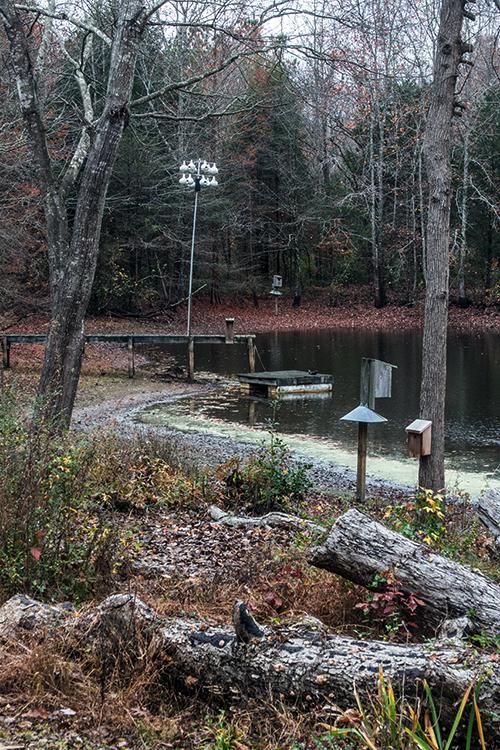

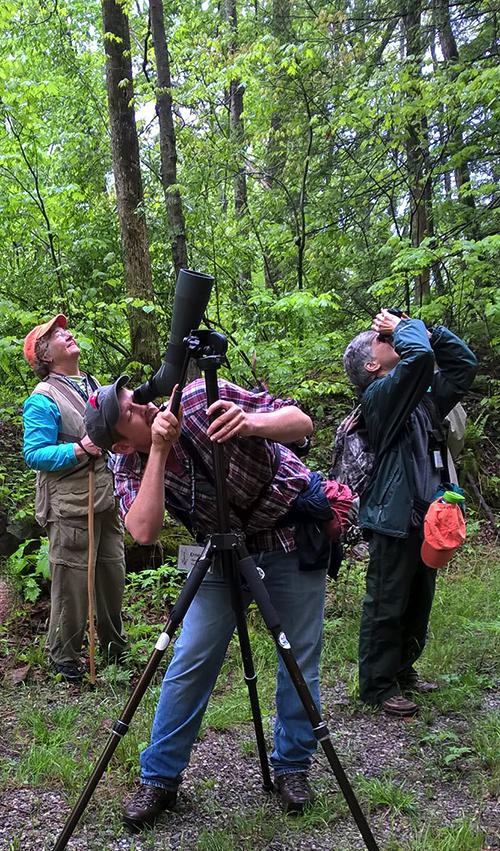
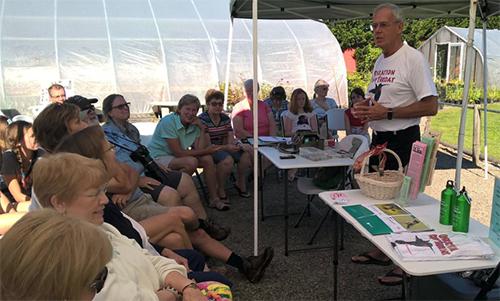
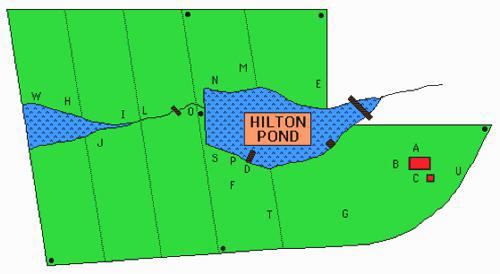
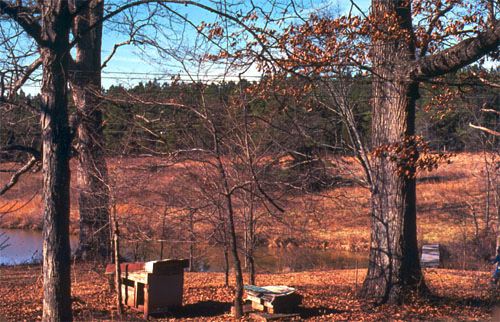

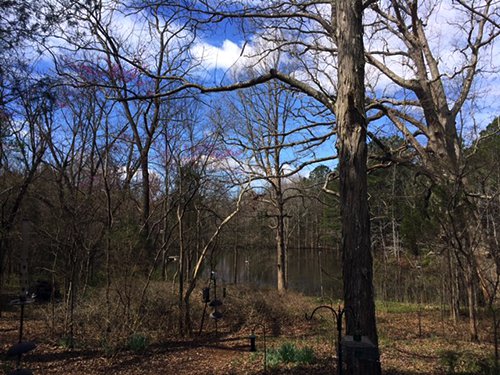
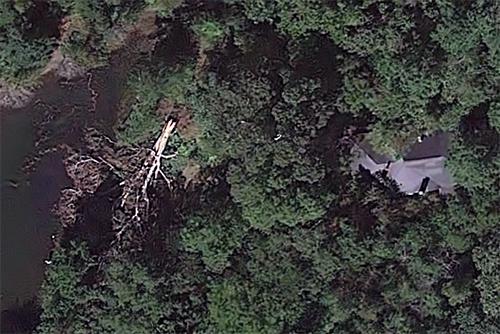




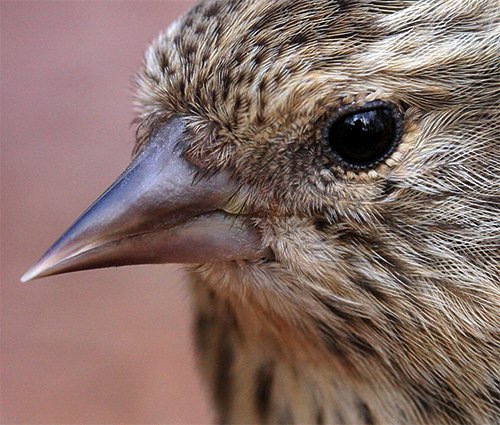
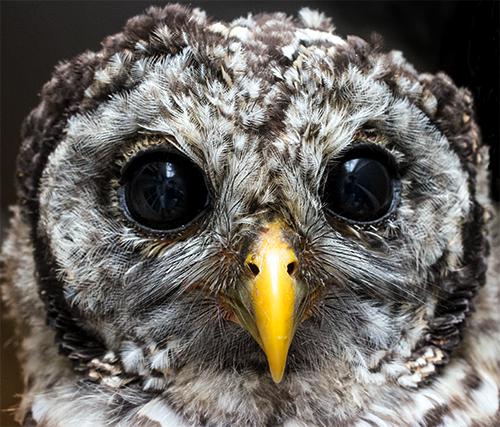




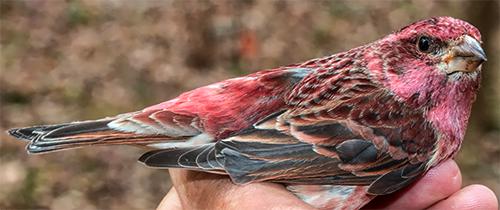


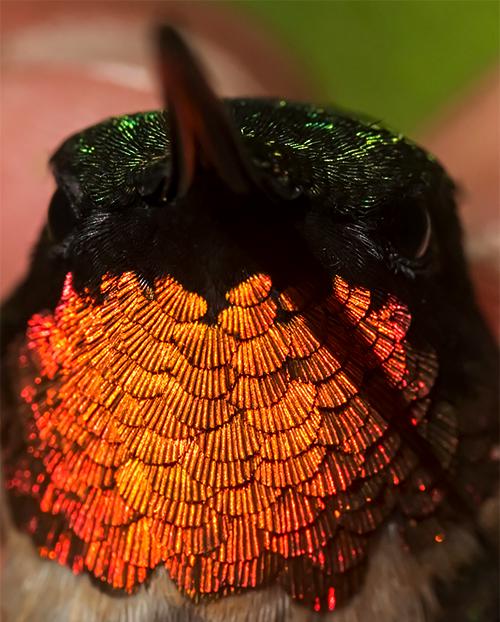
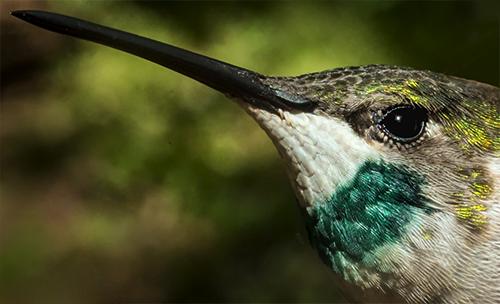

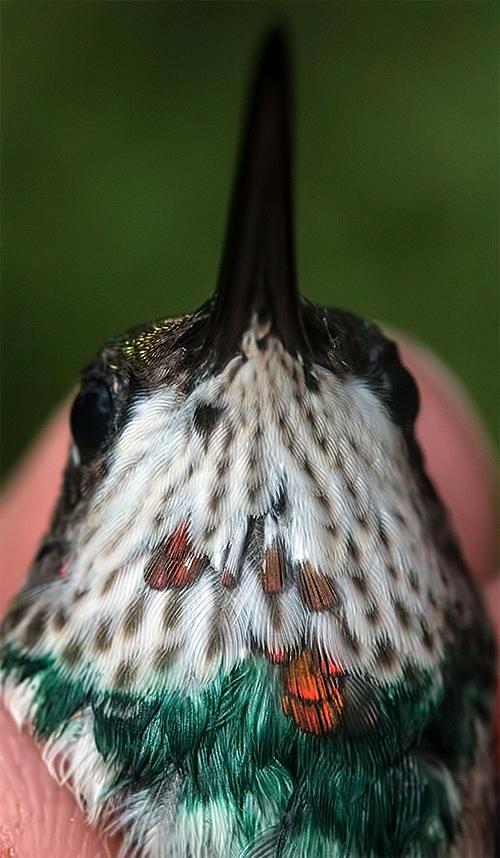

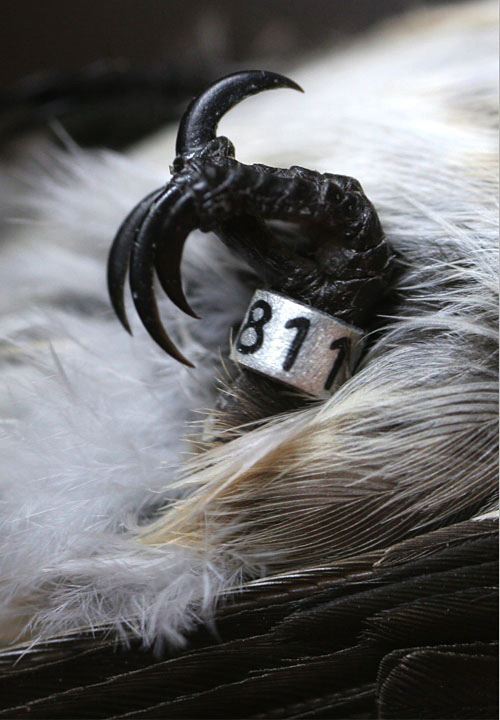
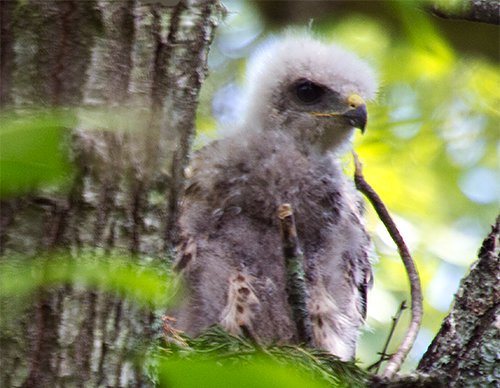
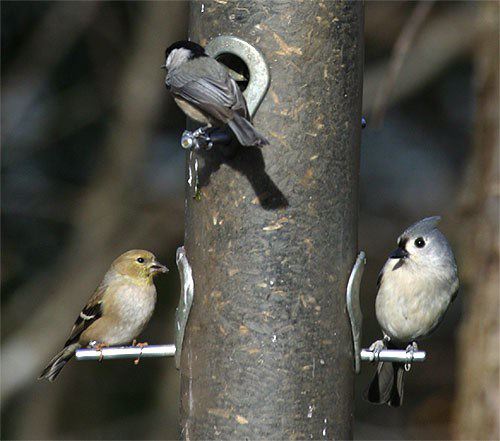










 Oct 15 to Mar 15:
Oct 15 to Mar 15: